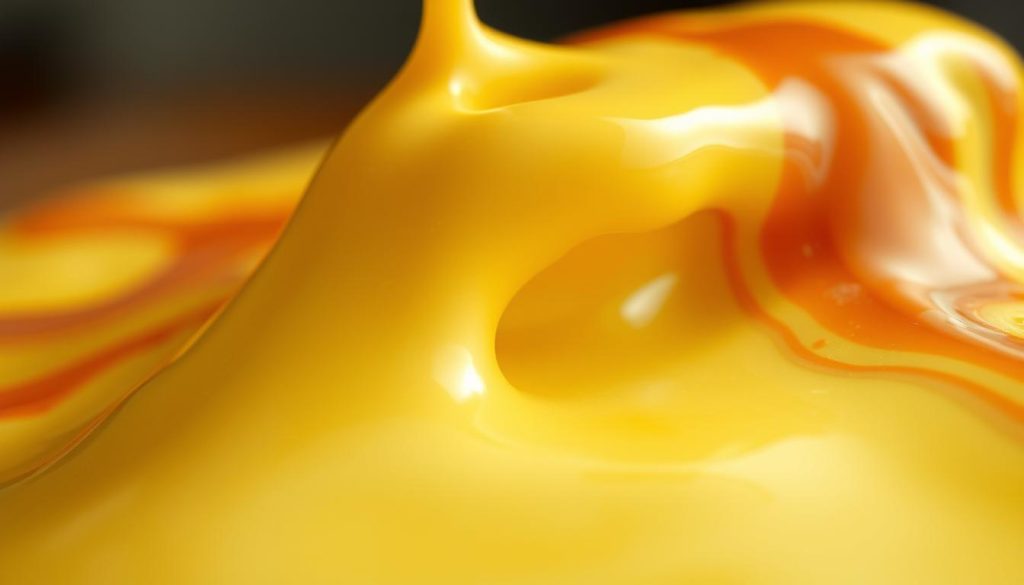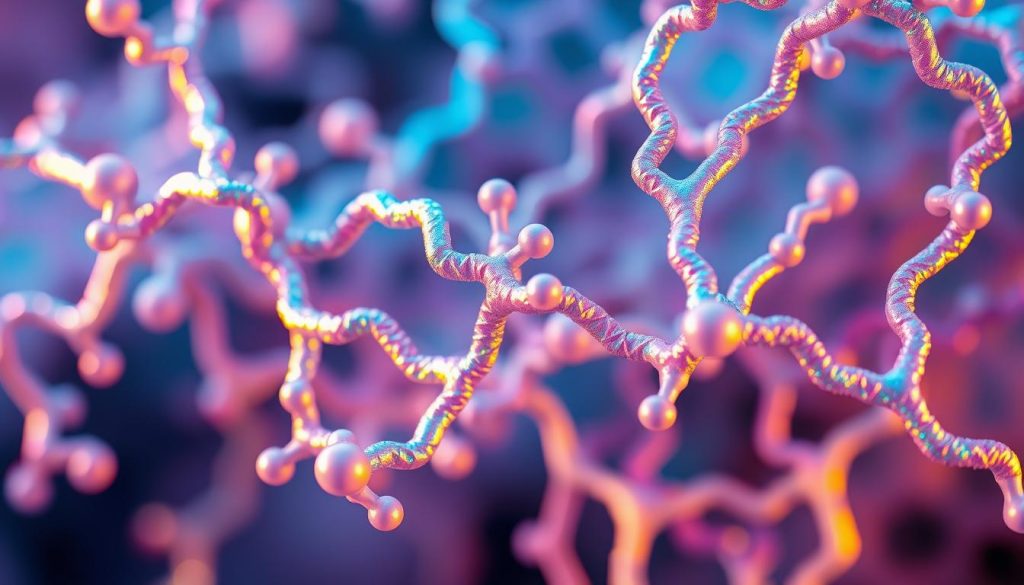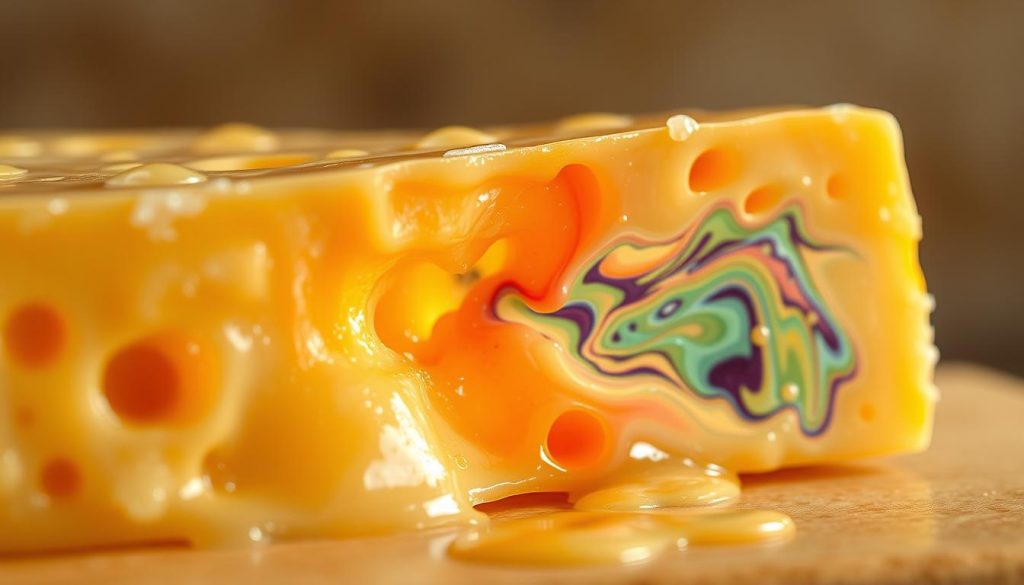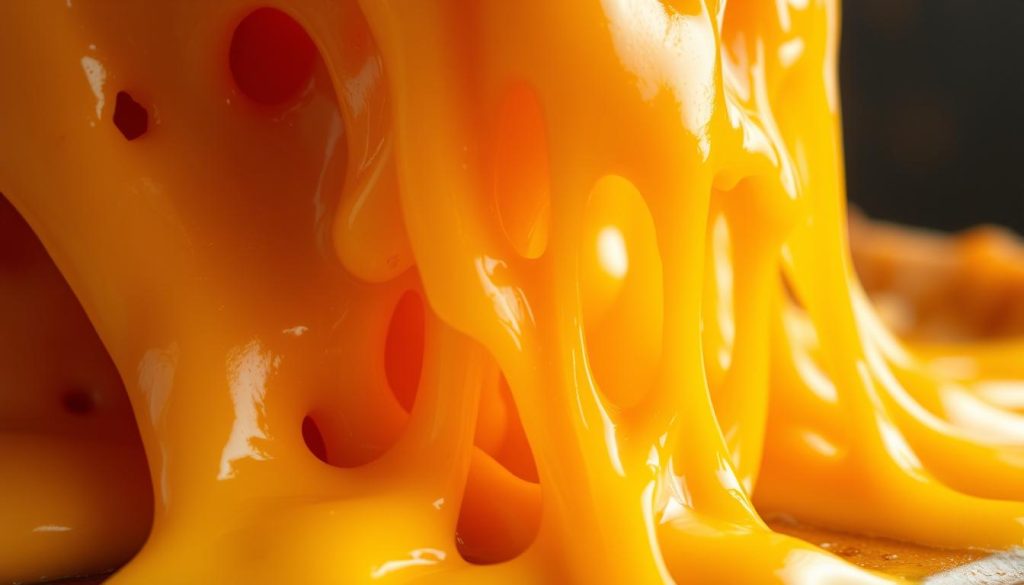Americans consume over 13 billion pounds of cheese annually, yet most never consider why mozzarella stretches while cheddar separates. Unlike ice cubes that turn directly to water, dairy products undergo a molecular ballet when heated. Their behavior depends on a delicate balance of proteins, fats, and moisture locked in a microscopic architecture.
Picture dairy as a protein net holding liquid fat droplets. Heating weakens these protein bonds, letting trapped fats liquefy first. As temperatures rise, the remaining structure relaxes enough to create that familiar ooze – but only if components stay balanced. Varieties with higher acidity or moisture levels melt unpredictably compared to aged, low-moisture options.
This explains why your grilled sandwich achieves perfection with certain varieties. Mastering these reactions helps prevent greasy pools on pizzas or crumbly textures in sauces. Whether crafting restaurant dishes or weeknight snacks, controlling heat-induced changes elevates every culinary creation.
Key Takeaways
- Dairy products melt through protein breakdown and fat release, not solid-to-liquid phase changes
- Three core components (proteins, fats, water) determine melting characteristics
- Heat first liquefies fats before altering protein structures
- Successful melting requires balanced component ratios
- Age, acidity, and moisture levels dramatically affect results
- Optimal melting temperatures vary between varieties
Introduction to the World of Cheese Melting
Ever wondered why some dairy creations turn velvety while others split into oily messes? The answer lies in their unique makeup. Like snowflakes, no two varieties behave identically under heat—a reality every home cook should embrace.
Overview of the melting phenomenon

Three elements dictate melting success: protein structure, fat content, and water activity. Young varieties with higher moisture melt smoothly, while aged options often crumble. Acidic types like feta resist heat changes entirely due to tighter protein bonds.
Consider this comparison of popular options:
| Type | Moisture % | Age | Acid Level | Melting Behavior |
|---|---|---|---|---|
| Mozzarella | 52-60 | Fresh | Low | Stretchy, even melt |
| Cheddar | 36-44 | Aged | Medium | Oily separation risk |
| Parmesan | 30 | 2+ years | High | Resists melting |
| Brie | 48-54 | 4-5 weeks | Low | Creamy flow |
Why this knowledge transforms your kitchen
Mastering these principles prevents failed grilled cheese sandwiches and lumpy sauces. You’ll choose varieties confidently—fontina for fondues, low-moisture mozzarella for pizza perfection. Restaurants leverage this science daily; now you can too.
Understanding protein-fat interactions helps troubleshoot issues. Is your sauce breaking? Try blending young gouda into your béchamel. Need stretch without grease? Combine provolone with a touch of sodium citrate.
Understanding the Composition and Structure of Cheese
The secret to perfect melted dishes lies in dairy’s microscopic architecture. Picture a three-dimensional scaffold built from casein proteins, functioning like reinforced concrete with calcium bonds. This framework holds pockets of liquid fat and water molecules in delicate balance.

Cheese as a network of proteins, fat, and water
Casein forms the structural backbone, creating flexible cages around fat globules. Younger varieties contain more water-filled spaces in this protein mesh, allowing easier movement when heated. The trapped fat acts as lubricant during melting, while water content determines whether the structure collapses gracefully or fractures.
The impact of water content and age on melting
Fresh mozzarella’s high moisture (52-60%) lets proteins slide smoothly under heat. Aged parmesan loses nearly half its water through evaporation, creating rigid bonds that resist melting. As cheeses mature:
- Proteins bind tighter through enzymatic changes
- Calcium bridges strengthen the casein network
- Reduced moisture concentrates flavors but limits flow
This explains why combining young gouda with aged cheddar creates balanced texture in sauces. More fat or water softens the protein scaffold, while aging builds structural resistance. Mastering these relationships helps predict which varieties will ooze, stretch, or crumble.
What Happens When Cheese Melts: The Science and Chemistry
Temperature acts as a conductor orchestrating dairy’s transformation. Every variety responds uniquely to thermal changes, governed by molecular interactions between three key players: casein networks, fatty acids, and mineral bonds.

Role of Heat, Acid, and Calcium in the Melting Process
At 90°F (32°C), fat globules begin liquefying like butter on a warm day. This initial phase creates the smooth base texture you want in sauces. But the real magic starts when temperatures climb 40-60 degrees higher.
Here’s where calcium’s role becomes critical. Acidic compounds dissolve this mineral “glue” holding casein proteins together. Think of it like soda eroding tooth enamel – the weaker these bonds become, the more flexible the protein network grows.
Casein Proteins and Their Behavior Under Heat
At 150°F (66°C), cheddar’s proteins finally relax enough to flow. But push beyond this sweet spot, and proteins tighten like overworked muscles. They squeeze out moisture, leaving greasy pools in your nachos or baked dishes.
Low-acid varieties face different challenges. Their calcium-rich structures resist melting entirely. That’s why aged gouda softens but won’t stretch like mozzarella. Balancing acidity and heat ensures proteins release fats gradually rather than abruptly separating.
Techniques for Achieving Perfect Melted Cheese
Transform ordinary dishes into culinary masterpieces by pairing smart cheese selection with precise heating strategies. The right approach turns basic ingredients into velvety sauces, golden-brown toppings, and stretchy fillings.

Selecting Cheeses That Offer the Best Melt
Younger varieties outperform aged options due to their higher moisture content and flexible protein networks. Mozzarella’s fresh, unaged nature makes it the gold standard for even melting. Other top performers include:
- Colby (creamy texture)
- Monterey Jack (balanced fat distribution)
- Young Swiss (smooth melt)
Sharp cheddar requires careful handling—its six-month aging causes fat separation at high temperatures. Parmesan’s tightly bound proteins resist melting entirely, making it better for grating over finished dishes.
Effective Heating Methods and Temperature Control
Low-and-slow heating preserves texture better than rapid blasts. Start with room-temperature cheeses to reduce thermal shock. Grating increases surface area for faster, more even melting.
| Cheese Type | Ideal Temp | Prep Tip |
|---|---|---|
| Mozzarella | 150°F | Slice thinly |
| Cheddar | 130°F | Mix with starch |
| Brie | 120°F | Remove rind |
For baked dishes, layer cheeses strategically—place high-moisture varieties between heat-resistant types. Stir sauces frequently to distribute heat evenly and prevent protein clumping.
Creative Kitchen Experiments and Cheesy Applications
Ready to play food scientist? Grab three tortilla wedges and watch dairy physics unfold. This simple test reveals why mozzarella dominates pizza while parmesan resists heat. You’ll see firsthand how fat-water ratios and protein bonds dictate real-world results.
The Tortilla Melt Challenge
Slice a tortilla into thirds. Coat each wedge with a different shredded variety: fresh mozzarella (left), medium cheddar (center), and aged parmesan (right). Bake at 200°F for 10 minutes. Observe three distinct outcomes:
| Variety | Moisture | Age | Result |
|---|---|---|---|
| Mozzarella | 58% | 2 weeks | Even stretch |
| Cheddar | 39% | 6 months | Greasy pools |
| Parmesan | 30% | 18 months | No melt |
Upgrade Your Go-To Recipes
Apply these findings to pizza night. Layer low-moisture mozzarella under fresh slices for balanced browning. For grilled sandwiches, mix young gouda with sharp cheddar – the combo prevents oil separation while boosting flavor depth.
Emulsifier Magic
Struggling with grainy sauces? Sodium citrate works wonders. This melting salt swaps calcium ions in casein proteins, creating silky textures even with stubborn varieties. As one chef notes: “It’s like giving cheeses a second chance to shine.”
Try adding 1 teaspoon per cup of dairy when making nacho cheese or fondue. You’ll transform crumbly aged types into velvety dips that stay smooth for hours.
Conclusion
Mastering dairy transformations requires balancing three key elements. Protein networks dictate texture, fat content influences smoothness, and moisture levels determine flow consistency. This knowledge lets you predict whether a variety will stretch, pool, or crumble under heat.
Aging duration directly impacts melting capabilities. Fresh options with higher water activity excel in sauces, while aged varieties add flavor without compromising structure. You’ll now select types confidently, avoiding oily separations in grilled sandwiches or baked dishes.
Precision heating methods prevent common mishaps. Low temperatures preserve protein integrity, while strategic emulsifiers maintain creamy textures. These techniques ensure consistent results across recipes, from simple snacks to complex entrees.
Innovative additives like sodium citrate unlock new possibilities. Transform crumbly aged varieties into velvety dips or create stable cheese foundations for gourmet presentations. Your culinary toolkit now expands beyond basic melting principles.
With this foundation, every dish becomes an opportunity for delicious experimentation. Whether perfecting pizza night or elevating weeknight dinners, controlled dairy transformations yield restaurant-quality results in home kitchens.



